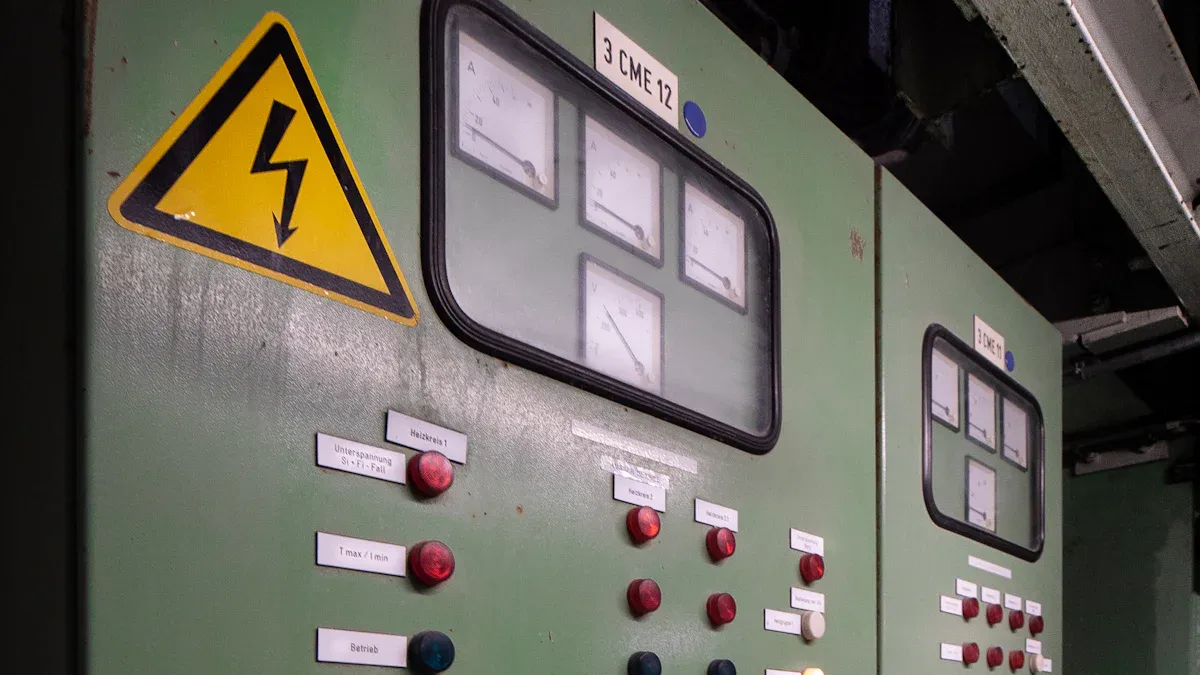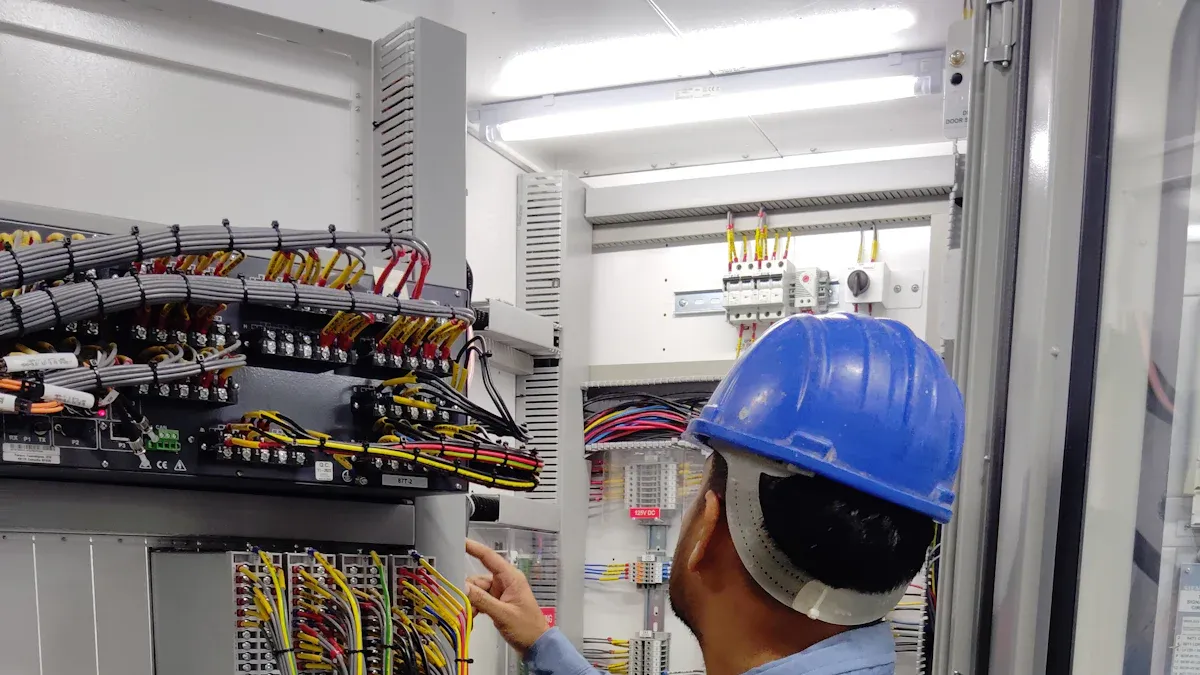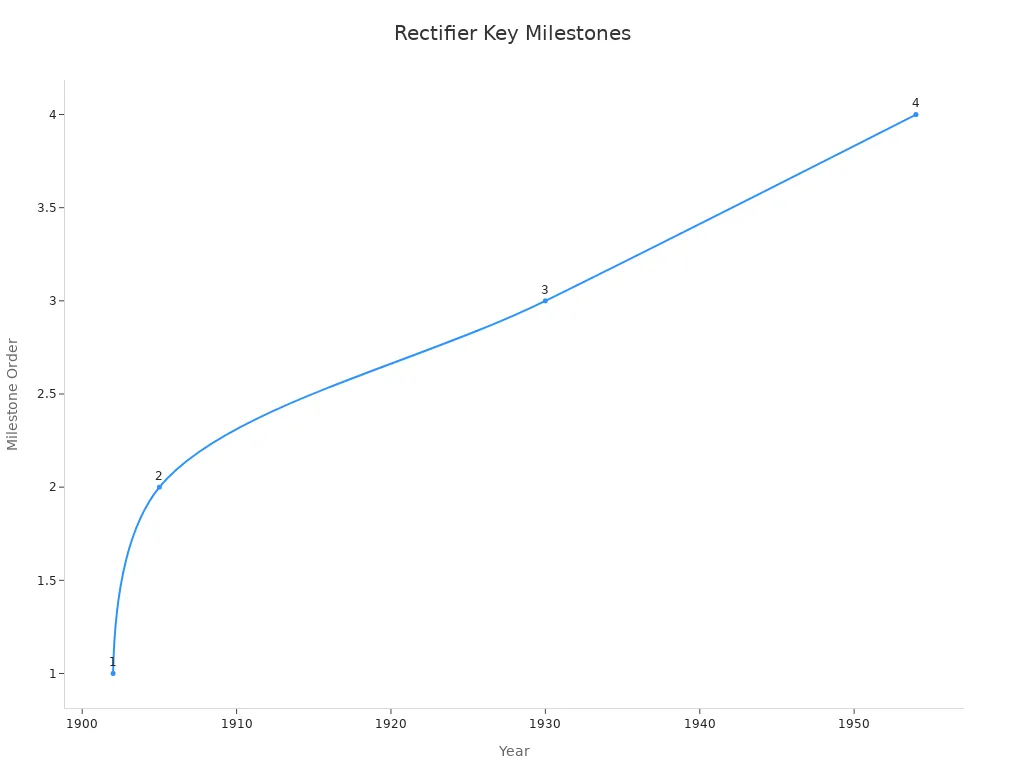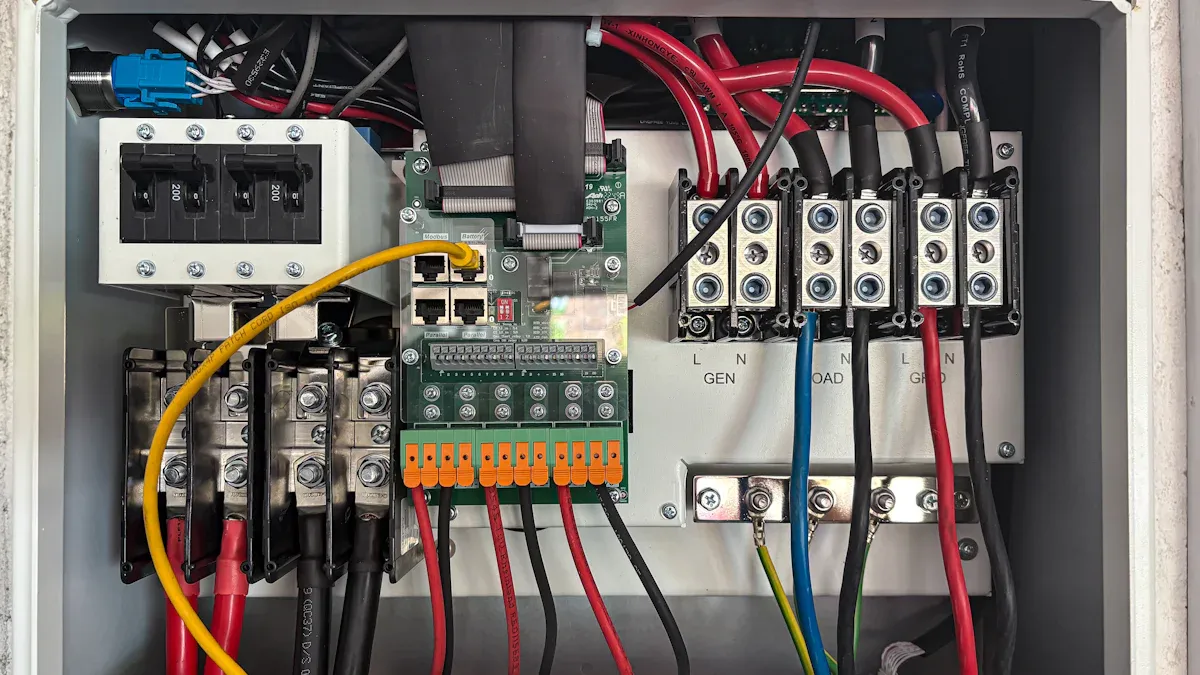Do I need a rectifier system for my cabinet and how much will it cost?

A rectifier system changes AC power into DC power. This provides steady electricity. Cabinets with delicate equipment, like telecom or industrial systems, need steady power to work well. If your devices need constant DC power to avoid breaking, you may need a rectifier system. It keeps devices safe from power changes that might harm them or stop them. Knowing your cabinet's power needs helps you decide if this system is necessary.
Key Takeaways
A rectifier changes AC power into steady DC power. This is important for delicate devices like telecom and medical tools.
Steady DC power protects fragile devices, helping them work well and last longer.
Check your cabinet's power needs and equipment type to see if you need a rectifier. Ask an expert if you're not sure.
Buying a rectifier can cut downtime and repair costs. It saves money over time, even if it costs more at first.
Keeping it maintained and picking energy-saving models can lower costs and improve how it works.
What is a rectifier system?

Definition and main purpose
A rectifier system changes alternating current (AC) into direct current (DC). This change gives devices a steady DC power supply. Some devices cannot work with AC power. Diodes in the system help by letting current flow one way. This makes the conversion from AC to DC possible. Filters are also important because they smooth out the DC power, making it stable.
There are several types of rectifiers, like half-wave, full-wave, and bridge rectifiers. Each type is used for different power needs. For example, a full-wave rectifier works better than a half-wave one. It uses both parts of the AC wave, making it more efficient.
Specification/Principle | Description |
|---|---|
Conversion Process | Changes AC into DC |
Role of Diodes | Helps current flow in one direction |
Filtering Importance | Makes DC power steady |
Types of Rectifiers | Half-wave, full-wave, bridge, etc. |
Applications | Electronics, machines, medical tools |
Common uses in cabinets
Rectifier systems are often found in cabinets with sensitive equipment. These include telecom devices, industrial machines, and medical tools. For example, a rectifier can be part of a control panel. It ensures steady power for processes like electro-coating or anodizing.
Application | Description |
|---|---|
Electro-coating | Adds a material layer to surfaces using electricity. |
Anodizing | Makes metal surfaces stronger with an oxide layer. |
Electro-machining | Uses electricity to shape or cut materials. |
Electro-refining | Cleans and purifies metals with electricity. |
Plating | Covers surfaces with a thin material layer. |
These examples show how rectifiers provide steady power for important tasks.
Why stable DC power matters
Stable DC power is very important for many devices to work well. Power changes can harm sensitive equipment or make it stop working. A rectifier system prevents this by giving steady DC power. This helps devices last longer and work better. It also reduces problems caused by power issues.
In the past, rectifier technology made big improvements in electrical systems. For instance, the mercury-arc rectifier in 1902 allowed current to flow one way. This was a key step for modern rectifiers. Later, silicon-controlled rectifiers (SCRs) made them even better and more reliable.

By giving steady DC power, rectifiers protect devices and help them work their best.
Do you need a rectifier system?
Things to think about
To know if you need a rectifier system, check your cabinet's power needs. Some machines, like telecom devices or factory equipment, need steady DC power to work well. If your cabinet has these, a rectifier system is very important.
Look at how good your current power supply is. If power often changes or cuts off, it can harm delicate devices. A rectifier system gives steady DC power and keeps your equipment safe.
Also, think about what your equipment does. Tasks like electro-coating or electro-machining need exact and steady power. Without a rectifier system, these jobs might fail or turn out badly.
Lastly, consider the long-term advantages. A rectifier system costs money upfront but saves money later. It lowers downtime and reduces repair needs for your equipment.
When it is a must-have
A rectifier system is needed in some cases. If your cabinet runs telecom systems, it likely needs steady DC power for smooth communication. Similarly, factory cabinets for making or shaping metal often rely on rectifiers.
Medical tools also depend on rectifier systems. Machines like scanners or surgical tools need steady power for safety and accuracy. In these cases, a rectifier system is not optional—it is required.
If your cabinet is in a place with unstable electricity, a rectifier system is even more important. It protects your equipment and keeps it running during power changes or blackouts.
When it might not be needed
Not all cabinets need a rectifier system. If your machines work fine on AC power, you may not need one. For example, simple lights or basic mechanical tools usually run well on AC power.
If your cabinet is in a place with steady electricity, power problems are rare. In this case, spending money on a rectifier system might not make sense.
Check how sensitive your devices are. If small power changes don’t affect them, a rectifier system may not help much. Still, it’s smart to ask an expert to decide what’s best.
Benefits of a rectifier system

Protection against power changes
Power changes can harm delicate devices or stop them from working. A rectifier system helps by turning AC power into steady DC power. This keeps voltage levels stable, even during power surges or overloads. Features like digital controls and low ripple output make it more reliable. These features protect your devices and keep them running.
Rectifiers also work well in places with unstable electricity. They use diodes to turn both parts of the AC wave into steady DC power. This shields your devices from sudden power changes. It lowers repair costs and helps your equipment last longer.
Better equipment performance
A rectifier system makes your equipment work better. It gives steady DC power, which helps machines run smoothly and saves energy. For example, telecom rectifiers use less power during conversion, cutting electricity costs and helping the environment.
Delta rectifiers are more efficient than older models. They can reach up to 98.5% efficiency, saving money on operations. Their modular design lets you adjust power capacity as needed. This makes them reliable and flexible.
Metric | Delta Rectifier | Older Rectifier |
|---|---|---|
Efficiency | Higher | Lower |
Power Losses | Smaller | Bigger |
Parts Count | Fewer | More |
These features make rectifiers a smart choice for improving equipment performance.
Less downtime and repairs
Downtime can stop work and cost money. A rectifier system reduces downtime by keeping power steady during outages or changes. Backup systems in rectifiers keep your devices running, avoiding interruptions.
Safety features like over-voltage and short-circuit protection keep your equipment safe. This means fewer repairs and lower maintenance costs. Steady DC power helps machines work well, saving time and money over time.
Feature | Benefit | Reliability Impact |
|---|---|---|
Backup systems | Keeps devices running during power issues | Reduces work interruptions |
Safety features | Stops over-voltage and short-circuits | Protects equipment |
Steady DC power | Gives constant power to machines | Ensures smooth operation |
With less downtime and fewer repairs, rectifier systems save money and improve operations.
Cost of a rectifier system
Initial purchase cost
The price of a rectifier system depends on its size and features. Large systems for factories or telecom use can cost $10,000 to $50,000. Smaller systems for simpler tasks are much cheaper. Choose a system based on your cabinet's power needs and equipment type.
Some brands sell modular rectifiers. These let you add more power later if needed. While they cost more upfront, they save money as your needs grow. Modular systems are flexible and can adjust to future changes.
If your budget is tight, compare brands and models. Find a system that balances price and performance. Many suppliers share detailed specs to help you decide.
Installation expenses
Installing a rectifier system involves more than just placing it. You need to pay for labor, wiring, and extra parts. Hiring professionals ensures safe and proper installation.
Costs depend on how complex your setup is. For example:
Simple setups: Easy designs cost less to install.
Complex setups: Cabinets with many devices or special layouts cost more.
To save money, get quotes from different installers. Some companies offer packages that include the system and installation. These bundles can lower your total cost.
Maintenance and operational costs
After setup, regular care keeps your rectifier working well. Maintenance includes cleaning, checking wires, and replacing old parts. This prevents breakdowns and helps the system last longer.
Running costs depend on the system's efficiency. Newer models, like delta rectifiers, use less energy and lower bills. Older systems may cost more to run because they waste energy.
You’ll also need spare parts like diodes and filters. Keeping extras reduces downtime during repairs.
To manage costs:
Plan regular maintenance.
Buy energy-saving systems.
Use trusted repair services.
With good planning, you can avoid surprise costs and keep your system running smoothly.
Factors affecting cost
The price of a rectifier system depends on many things. Knowing these helps you plan your budget wisely. Below are the main factors that impact the cost:
Initial costs: The size and features of the rectifier affect its price. Bigger systems with advanced features, like modular designs or high efficiency, cost more. But they save money later by using less energy and needing fewer repairs.
Installation difficulty: How complex your cabinet is affects installation costs. Cabinets with many devices or tricky layouts need more work and cost more. Simple setups are faster and cheaper to install.
Maintenance expenses: Regular care keeps your rectifier working well. Costs include cleaning, replacing parts like diodes, and inspections. Advanced systems with fewer parts may lower maintenance costs over time.
Material price changes: The cost of materials like metals and semiconductors can change. If prices go up, manufacturers may charge more for rectifiers.
Supply chain issues: Problems like natural disasters or health crises can delay supplies. This can raise the cost of rectifiers and their parts.
Government rules: Meeting strict energy and environmental laws can add to costs. Companies may spend more on research to follow these rules, raising product prices.
Renewable energy use: Adding renewable energy, like solar panels, can increase costs. Systems made for renewable energy often have extra features, making them pricier.
💡 Tip: Compare brands and models to save money. Pick a system that balances cost and performance. Ask an expert to help you choose the right one for your needs.
By thinking about these factors, you can understand the full cost of owning a rectifier system. This helps you pick one that fits your needs and budget.
Choosing the right rectifier system
Checking power needs
First, figure out your cabinet's power needs. Look at the voltage and current your devices require. Sensitive equipment, like telecom systems or factory machines, often needs steady DC power. If your cabinet has high-voltage devices, you might need a rectifier that handles up to 170V.
Think about where your cabinet is located. If power outages or changes happen often, a rectifier system is very important. For cabinets using renewable energy, make sure the rectifier can manage changing inputs. Write down the total power your devices need and any special requirements. This helps you pick the right system.
Looking at system features
Compare rectifier systems by their features. Choose systems with advanced technology for better performance. Below is a table of key features to check:
Feature | Description |
|---|---|
Fully featured evaluation board | Helps test the LT4322 active rectifier controller fully. |
High voltage full-wave rectification | Handles DC outputs up to 170V, great for high voltage needs. |
Ideal Diode bridge | Works like a diode but wastes less power, improving efficiency. |
Schottky diode bridge replacement | A better option than regular Schottky diodes for saving energy. |
N-Channel MOSFET usage | Smaller, cheaper, and more efficient than P-Channel MOSFETs. |
Frequency capability | Works well at frequencies up to 100kHz for more uses. |
Pick features that suit your cabinet. For example, if saving energy matters, go for systems with ideal diode bridges or N-Channel MOSFETs. High-frequency systems are good for flexible uses.
Asking experts for help
If you're unsure, talk to an expert. They can check your cabinet's power needs and suggest the best system. Experts also help with setup and care, making sure your system lasts.
Ask about compatibility, efficiency, and future upgrades. They can explain technical terms, like if you need a Schottky diode bridge replacement or a high-voltage rectifier. Their advice helps you choose wisely, saving money and effort.
💡 Tip: Contact suppliers or manufacturers for detailed info. Many offer free advice to help you find the best system for your cabinet.
A rectifier system is important for cabinets needing steady DC power. Check your power needs, equipment type, and usage before choosing. High-efficiency systems can cut yearly running costs by 15-30%. They also lower energy use over time by up to 40%. More than 70% of buyers pick Energy Star-certified systems for reliability and compliance. Though the initial price may be high, the long-term savings and better performance make it worth the cost. Talk to an expert to find the best system for your cabinet.
💡 Note: New energy rules push innovation, making modern rectifiers cheaper and eco-friendly.
FAQ
How long does a rectifier system last?
Rectifier systems usually work for 10 to 15 years. Taking care of them, like cleaning and replacing parts, can make them last longer. Better-quality systems often need fewer repairs and last more years.
Can I set up a rectifier system myself?
Setting up a rectifier system needs special skills. It’s best to hire an expert for safe and correct installation. Doing it wrong might harm your devices or cancel the warranty.
How should I take care of a rectifier system?
Here’s how to maintain it:
Clean it often to remove dust.
Check wires and connections for damage.
Replace old parts like filters or diodes.
Get a professional to inspect it yearly for best results.
Are rectifier systems good at saving energy?
New rectifier systems, like delta ones, save a lot of energy. They use up to 40% less power than older types. Look for systems with Energy Star labels or ideal diode bridges for better efficiency.
Can rectifier systems work with solar or wind power?
Yes, many rectifiers can handle solar or wind energy. Pick one made for changing power sources to keep it working well.
💡 Tip: Always read the system details to ensure it fits your renewable energy setup.
CALL US DIRECTLY
86-13752765943
3A-8, SHUIWAN 1979 SQUARE (PHASE II), NO.111, TAIZI ROAD,SHUIWAN COMMUNITY, ZHAOSHANG STREET, NANSHAN DISTRICT, SHENZHEN, GUANGDONG, CHINA

